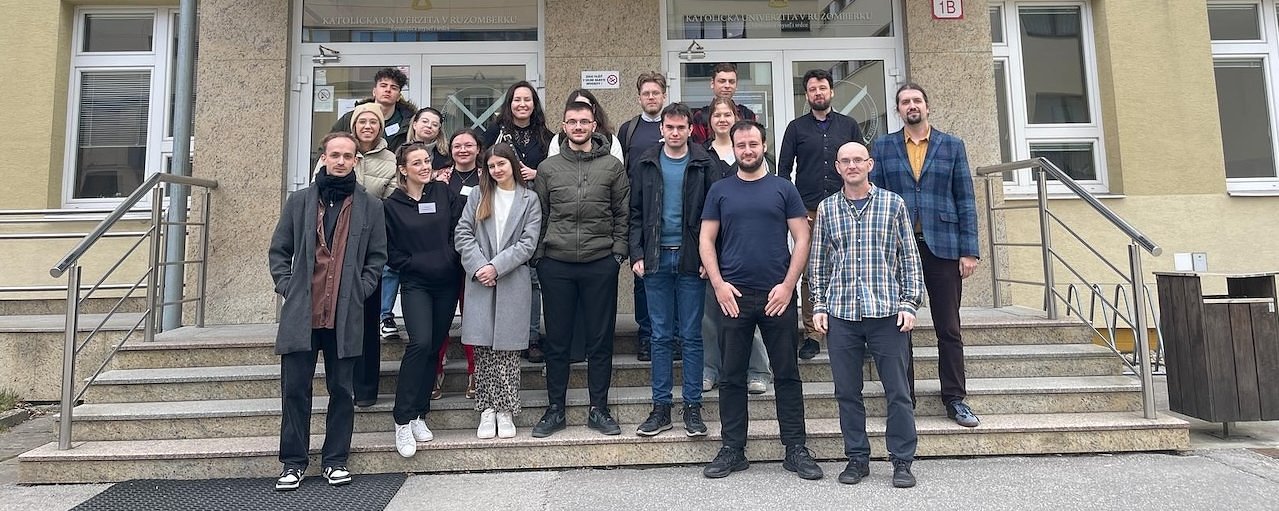Students from Poland and Croatia Discussed Plurality in History in Ruzomberok

In the week of 31 March 2025, an event Plurality in History: Theory and Case Studies took place at the Faculty of Arts and Letters of the Catholic University in Ružomberok. It was an educational mobility within the Erasmus+ Blended Intensive Program (BIP). BIP is an event that offers students from partner institutions from different countries to attend a week of face-to-face teaching at a hosting university and then to engage in online activities.
The program Plurality in History: Theory and Case Studies focused on the field of philosophy and theory of history. It offered a space for students to reflect on the nature of the discipline of history, specifically the relatively common situation in which there are multiple, comparatively plausible interpretations of the same past event. Students of history, philosophy and related disciplines from Adam Mickiewicz University in Poznań, Cardinal Stefan Wyszynski University in Warsaw and Josip Juraj Strossmayer University of Osijek had the opportunity not only to listen to lectures on various accounts of history, but also to discuss specific case studies on the plurality of interpretations of the First World War, the fall of the Roman Empire or to analyze the situation of different interpretations concerning findings in the field of material culture.
David Černín and Georg Gangl from the University of Ostrava, Juraj Šuch and Eugen Zeleňák from the home department of philosophy contributed to the program with lectures and workshops. The event was organized by Eugen Zeleňák, the Erasmus coordinator of the CU Michaela Moldová Chovancová and Janka Červeňová from the dean's office of the Faculty of Arts and Letters of the CU.
In addition to lively discussions during lectures and examinations of concrete examples, 16 students from Poland and Croatia had the opportunity to visit Vlkolínec, meet the local students and see Ružomberok and the region. It turned out that the event was attended by very smart and motivated students who like to discuss the nature of history, concrete examples of plurality and like to present their views on the topics discussed.
The last day of the in-person program was devoted to discussions about student examples of plurality in history. These will then be presented during the online sessions. We thank the students for their active participation, the partner institutions for their cooperation and we are delighted that the topic of plurality in history led to such lively and inspiring debates.

